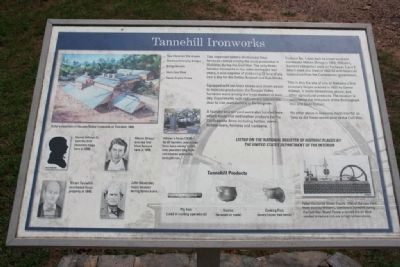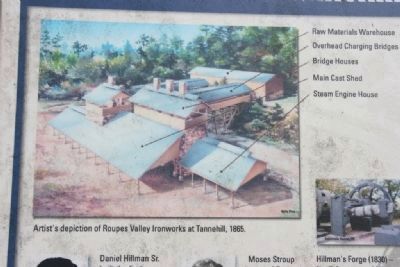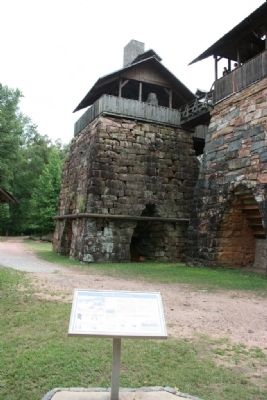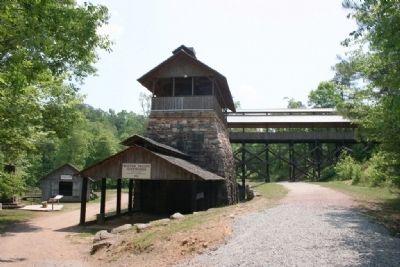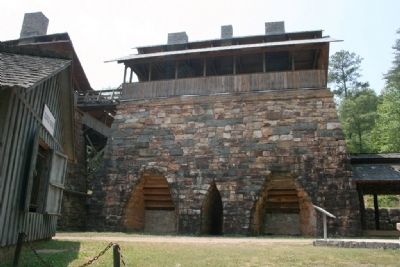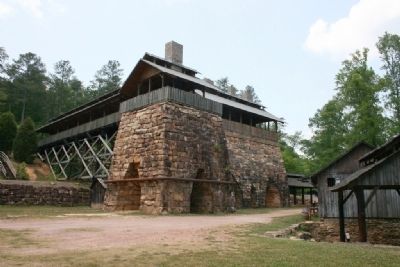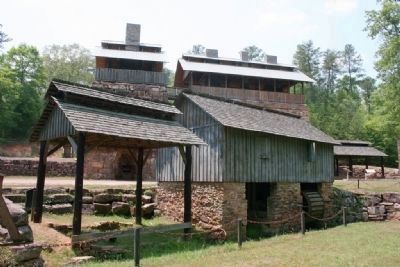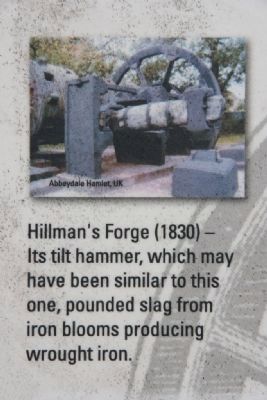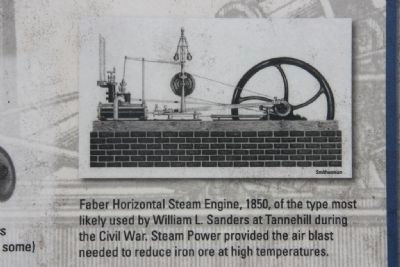Near McCalla in Tuscaloosa County, Alabama — The American South (East South Central)
Tannehill Ironworks
This important battery of charcoal blast furnaces ranked among the most productive in Alabama during the Civil War. The only three-furnace ironworks in the state during the war years, it was capable of producing 22 tons of pig iron a day for the Selma Arsenal and Gun Works.
Equipped with hot blast stoves and steam power to increase production, the Roupes Valley furnaces were among the most modern of their day. Experiments with red iron ore opened the door to iron manufacture in Birmingham.
A foundry and tan yard were also located here which made iron and leather products for the Confederate Army including kettles, ovens, hollow-ware, harness and canteens.
Furnace No. 1 was built by noted southern ironmaster Moses Stroup in 1859. William L. Sanders completed work on Furnaces 2 and 3 which went into blast in 1862-63 with financial assistance from the Confederate government.
This is also the site of one of Alabama’s first bloomery forges erected in 1830 by Daniel Hillman. It made horseshoes, plows, and other agricultural products. The location is considered the birthplace of the Birmingham Iron and Steel District.
No other place in Alabama made iron for as long as did these works prior to the Civil War.
Listed on the National Register of Historic Places by the United States Department of the Interior
Topics. This historical marker is listed in these topic lists: Industry & Commerce • War, US Civil. A significant historical year for this entry is 1859.
Location. 33° 14.874′ N, 87° 4.069′ W. Marker is near McCalla, Alabama, in Tuscaloosa County. Marker is located in the Tannehill Ironworks Historical State Park across from the furnaces. Touch for map. Marker is at or near this postal address: 12632 Confederate Parkway, Mc Calla AL 35111, United States of America. Touch for directions.
Other nearby markers. At least 8 other markers are within walking distance of this marker. Civil War Site 1861-1865 (here, next to this marker); The Stewart House (about 500 feet away, measured in a direct line); Roupes Valley Iron Company (about 500 feet away); Fowler House (about 600 feet away); The Marchant House (about 600 feet away); Gott Cabin (about 600 feet away); The Dunkin House (about 700 feet away); Tannehill Furnaces (about 700 feet away). Touch for a list and map of all markers in McCalla.
Also see . . . Tannehill Ironworks Historical State Park. Park website homepage (Submitted on May 4, 2021, by Larry Gertner of New York, New York.)
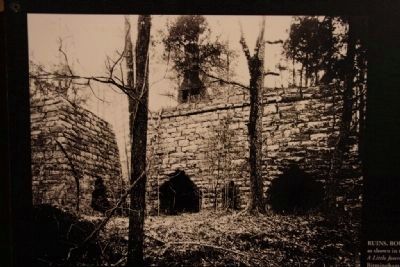
Photographed By Tim & Renda Carr, July 10, 2010
5. Ruins of the Tannehill Ironworks 1890
The operations at Tannehill Ironworks came to an end on March 31, 1865, as three companies of the Eighth Iowa Cavalry swepted through the area destroying the furnaces, cabins, foundry, and tannery as part of Union General James H. Wilson's raid into Alabama destroying the Confederate industry.
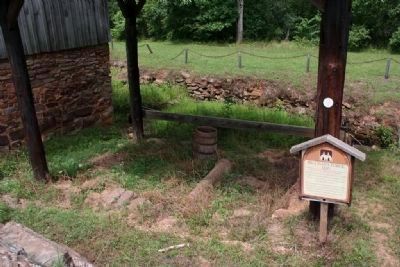
Photographed By Tim & Renda Carr, July 10, 2010
10. Site of the Hillman's Forge next to the blower house.
Hillman's Forge 1830
Uncovered by a University of Alabama archaeological team in 1990, this site is thought to have been Daniel Hillman's bloomery built in 1830. It was the birthplace of the Birmingham Iron and Steel District.
With construction of blast furnaces here in 1859, this structure may have been converted into a cupola for castings, a contention supported by the large number of tools and machine parts found in the excavation.
Uncovered by a University of Alabama archaeological team in 1990, this site is thought to have been Daniel Hillman's bloomery built in 1830. It was the birthplace of the Birmingham Iron and Steel District.
With construction of blast furnaces here in 1859, this structure may have been converted into a cupola for castings, a contention supported by the large number of tools and machine parts found in the excavation.
Credits. This page was last revised on May 4, 2021. It was originally submitted on September 27, 2010, by Timothy Carr of Birmingham, Alabama. This page has been viewed 1,354 times since then and 28 times this year. Photos: 1, 2, 3, 4, 5, 6, 7, 8, 9, 10, 11. submitted on September 27, 2010, by Timothy Carr of Birmingham, Alabama. • Craig Swain was the editor who published this page.
